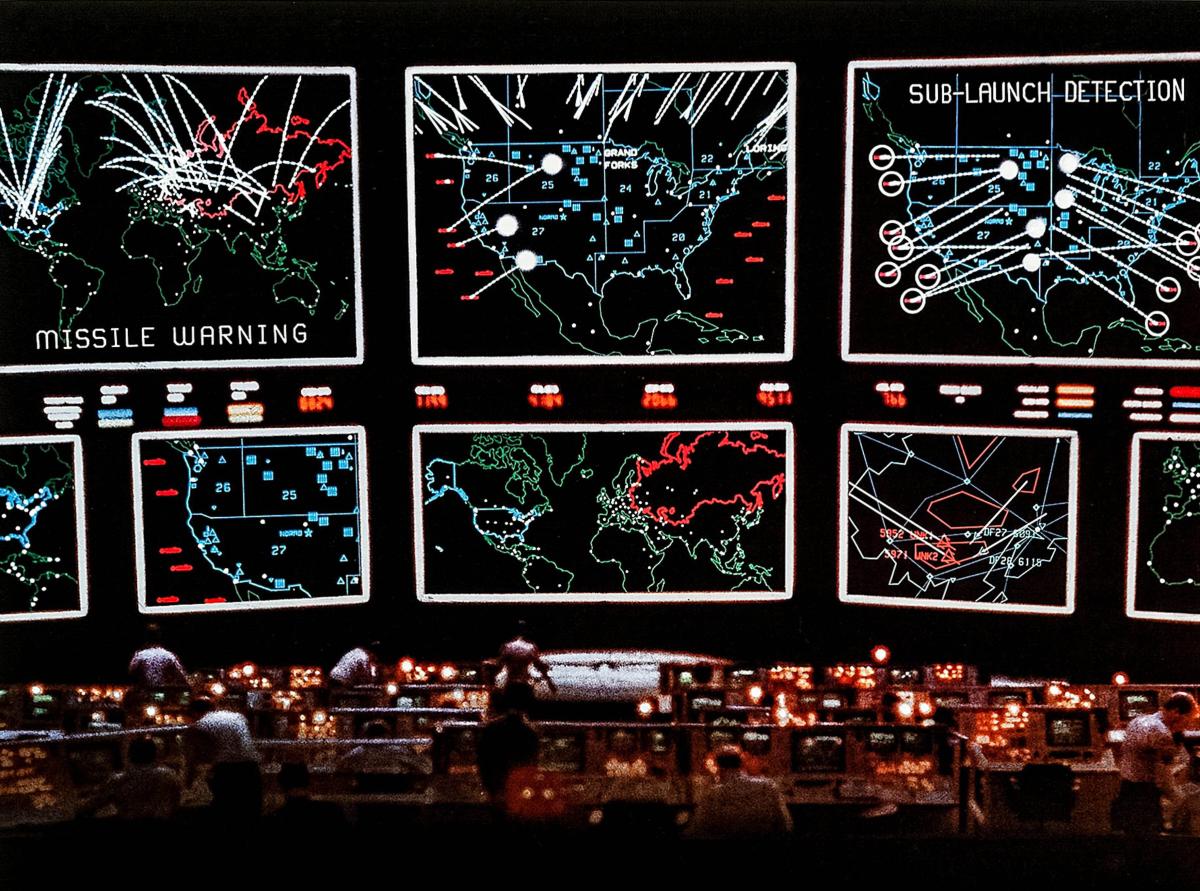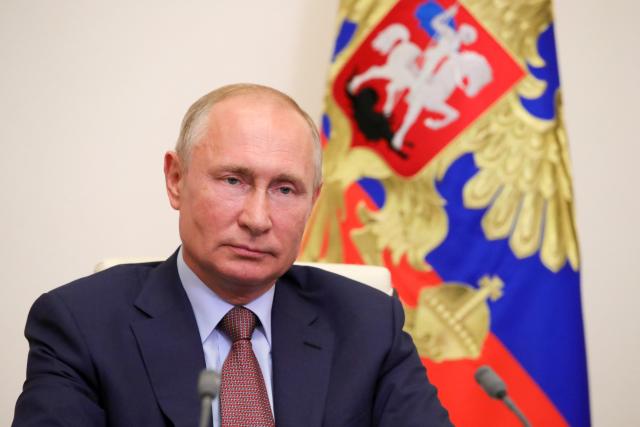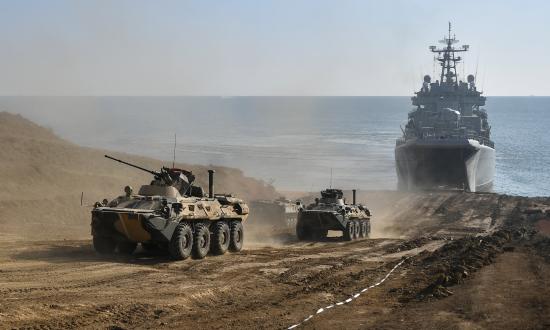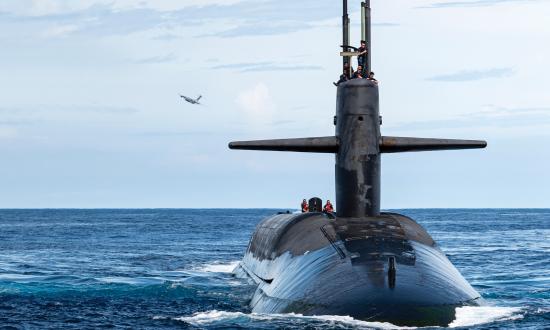In the 1983 movie WarGames, a NORAD supercomputer runs through all possible scenarios for bilateral nuclear war, finding they all lead to global annihilation. It calls nuclear war “a strange game” and concludes, “The only winning move is not to play.”
While an overly simplified trope for U.S. foreign policy, the United States should consider WarGames when facing off against President Vladimir Putin. All games have rules, and if Putin is determined to play a game of brinkmanship, the United States has a strong hand. With a refresher on the rules, it can demonstrate to Russia as it contemplates war against Ukraine, or beyond, that there is only one winning move.
Rule # 1 – Read the Rulebook
When facing an opponent who believes the rules do not apply to him or who is determined to blur or even rewrite them, it is critical to reinforce the rules. Referees, who exist to judge adherence to the rules and fair play, must endure and have the necessary clout. To that end, the United States must help reforge multilateralism, doubling down on the rule-based structure of international institutions it played a pivotal role in establishing. The United Nations, World Bank, and similar institutions offer a framework for play, and U.S. buy-in ensures they have the teeth to confront Russian infractions.
In addition, if it expects fair arbitration, the United States must ascribe to the rules it proclaims: For example, it cannot cry foul over Russian threats to freedom of navigation while remaining a nonsignatory to the U.N. Convention on the Law of the Sea. Instead of flaunting exceptionalism and decrying these institutions’ irreconcilable problems, it must advance their credibility and authority. When necessary to withdraw from a commitment, the United States must state its intentions early and provide justification to avoid the perception that it too shirks the rules. Rule-breaking must bear a cost.
Rule # 2 – Strengthen Your Team
Russia is recruiting teammates such as Belarus, Syria, and Iran. Let it. Fellow rule-breakers do not make a strong team. Moreover, Putin is driving away players who might have stood on the sidelines. An estranged China, for example, might even support the United States in this case. In contrast, the United States must recognize each player’s right to choose a team and strengthen ties with those committed to the rules.
First, the United States must be a good teammate to both Ukraine and others, through early consultation and information sharing. It must reaffirm its commitment to NATO and foster the commitment of fellow members, taking all opportunities to practice and play as a team. A strong team relies on all its players, which means ensuring the fitness and resilience of each and shoring up any vulnerabilities—in governance, economics, defense, cyber, or energy. This enables the team to take a hit and keep playing.
Putin’s strategy is to divide NATO, and his great advantage is his ability to act unilaterally, moving pieces swiftly without the immediate ramifications of political or even popular opposition. NATO can deny Putin this play by solidifying a deep, diverse, and robust team. The United States also must lead NATO in developing a “playbook” of predetermined actions, to ensure consensus for swift response, in anticipation of Russia’s moves. Typically, it is best not to reveal a hand too early, but showing a prepared and united front can raise the stakes an untenable amount for the opposition.
Rule # 3 – Know Your Opponent’s Tells
Putin, and many of his players, have more than two decades of studying opponents under their belts. Russia floods the playing field with subversive messaging tailored to these opponents, and its disclaimers and preemptive counternarratives obscure malign activity. The United States cannot allow Russia to own the narrative; it must counter with transparency and accurate information that demonstrates the true state of play.
On the other hand, Putin’s long tenure also has revealed his game play: blurring the rules, bullying or bribing players and officials, or confounding the referees. He intends to declare that Ukraine and NATO left him no options but aggression. Knowing this, it is critical that the U.S. team anticipate his next move. Because the best defense is often a good offense, the U.S. team must reclaim the initiative through enhanced early warning, detection, intelligence gathering, and information assessment and sharing among teammates, which builds the consensus needed for quick action.
Rule # 4 – Use All Your Moves
The United States must consider its entire arsenal of pieces and moves in any global high-stakes game. It can leverage partnerships, economics, diplomacy, and the military. Moves include economic sanctions, diplomatic negotiations, isolation, counternarratives, information transparency, and moving pieces closer to the opponent. The United States must make its moves timely—the team must have rapid consensus; tailored—actions must be scalable and appropriate; and costly—once communicated, they must be executed.
Rule # 5 – Keep Your Eyes on the Prize
A game seems worth playing when one sees an opportunity to win, but winning cannot be the end in and of itself. War games always have costs, and peace—which sometimes must be fought for—is the ultimate prize. A tie might be acceptable to reach this prize when room to compromise exists. But neither a tie nor a loss that sacrifices sovereignty or allows Putin to continue to break the rules or make destabilizing moves is acceptable.
If the United States adheres to these five rules, it can demonstrate to Russia that the costs and likelihood of losing are so high, the only winning move is not to play.
Commander Manuel previously served as U.S. naval attaché to Romania and currently is a Federal Executive Fellow at Carnegie Mellon University’s Institute for Politics and Strategy. The opinions expressed here are those of the author and do not reflect those of the U.S. Navy or Department of Defense.







